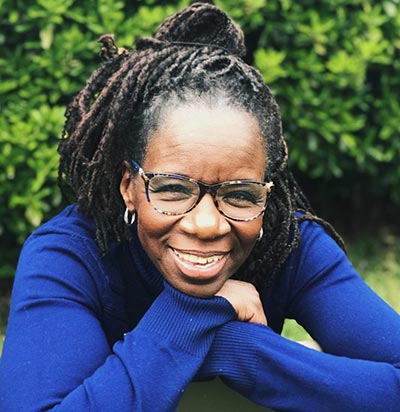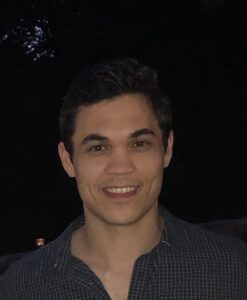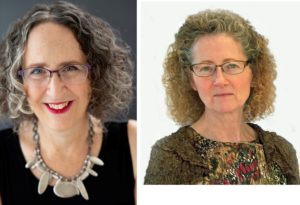The Issue of Race in Writing
by Cynthia Robinson Young
October 27, 2020
On Being Intentional
Here is an interesting confession: I have always assumed that any books a teacher assigned in any kind of class, no matter what the subject, unless is was a designated class on race, the author would be white, and it would be probably be about white people. The subject of race was always contained within the definition of the course. If the teacher was Black, then all bets were potentially off, although I still thought it safe to assume the authors would be white if English literature was the subject. And I wasn’t the only one who held this assumption. In my first semester in a graduate creative writing program, I took a class on poetry with an African American professor who assigned a poetry collection by Nikki Giovanni. I was not surprised that he had chosen a Black poet, but the fact that he had chosen a woman was impressive, exposing my prejudice that as a male poet, I assumed he might lean more toward choosing other poets like himself. But that wasn’t the concern of the rest of the class, in which were two other women of color. Looking back, I hope that the student who raised her hand with a question just represented herself and not any of the other white male and female students when she asked the professor, “Why are we reading a Black poet?”
Looking back, all this student did was expose what she had been educated to believe: in a general education about poetry that hasn’t been listed as “Other”, the poets would be “universal.” The professor’s answer was succinct and priceless. He answered calmly and unruffled; it was a class viewing the craft of poetry through the lens of Zen Buddhism after all. So, in a voice just above a whisper, he said, “Because I said so.”
Taking the class revealed even more as the craft of writing pertains to race. Even the professor’s first poetry assignment was controversial. When he asked the class to write a political poem, students were in a flurry in the class a week later, as they talked about the difficulty of the assignment amongst themselves before the professor entered the room. I was both interested in their struggle and confused. I realized then that pretty much everything I write is political. It isn’t intentional. I thought it was life. So when I read this excerpt from David Mura’s essay, “The Search for Identity” in A Stranger’s Journey, I thought this might be why. He writes:
When a person comes from a family or a group that has been marginalized, when she is one of the “subalterns,” the silence such a person confronts about herself and her experiences within the greater culture is a political condition. In such cases, the very act of writing about herself and her experiences becomes a political act.
It was interesting to note that the other women of color in the class also wrote from their experience in being women of color. Their poems were authentic and moving, therapeutic poems of discovery of another layer of racism they had experienced.
It is unfortunate that professors have to be intentional if they are to include writers of color in the assigned reading of even contemporary literature, and unfortunate that it is questioned when they do it, and assumed to be “normal” when they don’t. One of my three classes on magical realism and fairy tales did not include one author of color, even though that is the main genre I enjoy reading and so I know that many works, such as those of Louise Erdrich, Isabel Allende, Octavia Butler, and most recently, Ta-Nehisi Coates with his book, The Water Dancer. But I am thankful for my professors who are intentional, because in doing so, they are truly educating the students deal with the reality of racism in terms we have not been challenged to even consider.
The scope of the issue of race in writing is vast. In this essay, I don’t think I can cover all the nuances of the impact of race, and how it affects the craft, but I would like to begin the dialogue as I attempt to explore some of the ways race impacts the craft of writing, and two writers, Toni Morrison and David Mura, who have pondered this issue.
Toni Morrison began to explore the impact of white superiority is portrayed in literature in her nonfiction book, Playing in the Dark: Whiteness and the Literary Imagination, and expanded some of those ideas even more, theories which served as the basis of The Origin of Others, where she also wrestles with the question of what it even means to be a writer of color, and all of the implications. David Mura, building on Morrison’s insights, offers a unique approach to race in his book, A Stranger’s Journey: Race, Identity, and Narrative Craft in Writing. I will then explore how these ideas are employed in Morrison’s novel, Sula. My goal in writing this paper is to explore the depth of how race has not only influenced our reading of literature, but how it influences our writing, and, in understanding the role of race, to be more intentional in using the craft of writing about race to inform how it is a craft that must be acknowledged and considered, as well as how I can use this knowledge in my own writing of my novel.
White Superiority in American Literature
Until recently, little thought was given to the label, “white superiority”, as it was reserved for those who openly identified with the Ku Klux Klan, the White Citizen’s Council, and Nazism and its followers. But the term seems to have taken on a new life as it has been redefined. Whereas it previously was defined in the narrow term of white people who believe that the white race is the smartest and most civilized and thus should have control over all races because it is the gift of white people to be the brightest and best, the broader definition is more based on the reality of what white superiority looks like, what the culture of whiteness looks like, which includes privileges that people of color do not have access to. In literature it appears in different forms. It is interesting to note what Morrison says white writers use as shortcuts in their writing—black images and black stereotypes. In Playing in the Dark, she notes, “I do not have quite the same access to these traditionally use constructs of blackness. Neither blackness nor ‘people of color’ stimulates in me notions of excessive, limitless love, anarchy, or routine dread. I cannot rely on these metaphorical shortcuts because I am a black writer struggling with and through a language that can powerfully evoke and enforce hidden signs of racial superiority, cultural hegemony, and dismissive ‘othering’ of people, language which are by no means marginal or already and completely known and knowable in my work. It is troubling that white writers can just throw a Black character in their novels and trust that the reader will make stereotypical assumptions unquestioning the truth of these assumptions is troubling, but it has been the experience of all readers who read novels such as these. Here is an example of writing not what you know, but who you know. And if the writer doesn’t know, s/he must either avoid writing about them, or find that trusted “other” to vet his/her works. In Sula, Morrison has a plethora of characters, and all of them are individuals. Morrison says, “…my vulnerability would lie in romanticizing blackness rather than demonizing it; vilifying whiteness rather than reifying it.” What was Morrison’s struggle in having Sula be a Black woman who was promiscuous in the eyes of the townspeople, when that is a stereotype of Black women? The example lies in the depth of characterization of Sula:
“Sula was completely distinctly different. Eva’s arrogance and Hannah’s self-indulgence merged in her and, with a twist that was all her own imagination, she lived out her days exploring her own thoughts and emotions, giving them full reign, feeling no obligation to please anybody unless their pleasure pleased her. “
She is written as a complex character who does what she wants. It therefore makes sense that she acts as she does. Sula isn’t defined by her race or her sex, but by her personality. Nell is a Black woman, as is her mother, Helene. Neither of them have the personality to act as Sula did. Part of the craft of writing about race is the ability to see that characters are people first. How many writers, Black or white are willing to struggle with writing real characters that represent truth versus the politically correct truth of the moment? It is also interesting to note that white readers can bring their own ignorance of race into their reading of a book like Sula. in a recent class, when a white graduate student who had not heard of Toni Morrison until she read the novel, Sula, asked the class if we thought that the character was lying in this scene when Nell is talking to Sula on Sula’s return:
“Tell me about it. The big city.”
(Morrison 99)
“Big is all it is. A big Medallion.”
“No. I mean the life. The nightclubs, and parties…”
“I was in college, Nellie. No nightclubs on campus.”
It was quickly pointed out by other white students that on page 121, Morrison writes that Sula “had lied only once in her life—to Nell about the reason for putting Eva out, and she could lie to her only because she cared about her”, while the two African American women students were sitting in the class speechless, trying to process what was actually being implied in the white student’s question.
Another part of white superiority is the assumption that all of the readers will be white, so there won’t even be any offence taken by Black readers because there won’t be any! This brings up the subject of universalism in writing. In Playing in the Dark, Morrison states, and Mura repeats her statement in his book the idea that,
“For reasons that should not need explanation here, until very recently all of American fiction has been positioned as white. I am interested to know what that assumption has meant to the literary imagination. When does racial ‘unconsciousness’ or awareness of race enrich interpretive language, and when does it impoverish it? What does positing one’s writerly self, in the wholly racialized society that is the United States, as unraced and all others as raced entail? What happens to the writerly imagination of a black author who is at some level always conscious of representing ones’ race to, or in spite of, a race of readers that understands itself to be ‘universal’ or race-free? In other words, how is ‘literary whiteness’ and ‘literary blackness’ made, in what is the consequence of that construction?”
This statement first addresses the subject I mentioned in the beginning of the paper– how an educator can fill a syllabus of assigned readings that only represent white writers and not realize the white superiority that is implied to do so, as well as what it teaches the white students who will leave the classroom not even considering reading the work of writers of color because they only read “universal’ writing versus books written for Black readers? Mura goes on to say, “While white writers have not traditionally had to imagine a reader of color, writers of color have always been cognizant that their work would be judged and interpreted by white readers.”
To be sitting in an English class on African American Women writers with English graduate students who have not read anything by Alice Walker, Toni Morrison, or even heard of these writers that have been the core of my literary sustenance astounds me, and begs the question, what have they been reading? And why have I read all of the books they’ve read? Mura calls this “racial segregation of reading and learning.”
The statement also addresses the idea that as an African American writer, to be successful I must write to a universal audience; that every readers won’t be able to my work because if I mention race, if there are Black characters, then it won’t be accessible. What it actually is, is code for the white superiority of reading; that if it’s not written for white people, it’s not going to be commercially successful. No African American writer is going to challenge that, even if they decide it doesn’t matter to them. Our prime example is Toni Morrison’s two books, The Bluest Eye, and Sula. Before Oprah’s Book Club, which appealed to white America so much that anything Oprah recommended became a best seller, most of white America had not heard of Toni Morrison. The rush in popularity of her books produced a repackaging and printing of her books and catapulted her to stardom, Oprah’s Book Club became synonymous with “universalism”. If Oprah told white America to read a book written by an author of color, it was “safe”, it was accessible, and it was appealing.
Is There a Way to Not Write About Race?
David Mura presents an interesting contrast between the basic assumptions white writers and writers of color bring to their writing (and reading). To summarize: for whites, the default race for the characters is white unless stated so to mention race turns the work into a racial/political piece; there is no indication of how any characters of color view the white characters so there is no lens of race to judge the work—it’s race-less. For writers of color, if the characters are not white, they must be labeled; the writer must make a decision about the way these characters are seen because we are aware of the stereotypes that will projected if we don’t; the lens of race “is essential to understanding…the way the writer views her characters and the larger society.”
This reminds me of how most African Americans are raised; we never represent ourselves, but rather a whole race. I was always aware and envious that my white friends could be themselves, and all white people weren’t judged by how they acted, how they dressed, how they spoke. And here it is again in writing, where white writers are free to just write whatever and assume everyone will find it accessible and race free. In the introduction of Sula, Morrison discusses the burden put on Black writers as she experienced it with her novel. “If the novel was good, it was because it was faithful to a certain kind of politics;…the judgement was based on whether ‘Black people are—or are not—like this.”
Morrison, always aware of, and always trying to be intentional and purposeful in her writing, starts Sula off with what she called a “lobby” (Morrison xv) which served as a gentle entrance for whites to enter her novel. She says of the later novels, that they “refuse the presentation, refuse the seductive safe harbor; the line of demarcation between…them and us.” Morrison notes how Black writers don’t possess “privilege” in America of not wrestling with this question. In her essay, “The Color Fetish” in The Origin of Others, she writes, “I became interested in culture rather than skin color; when color alone was their bête noire, when it was incidental, and when it was unknowable, or deliberately withheld. The latter offered me an interesting opportunity to ignore the fetish of color as well as a certain freedom accompanied by some very careful writing. In some novels I theatricalized the point by not only refusing to rest on racial signs but also alerting the reader to my strategy” (Morrison 49),
With this idea in mind, she later writes the novel, Home, as her attempt to write with the freedom white writers have, with no mention of race at all. In Home, there is no “colored storekeeper” or “white doctor”. Instead she uses Black codes to indicate to the reader what the race is, and what it would look like through the lens of the characters. It is a story of a brother named Frank Money who, after leaving the Army, travels across the country to find his sister, Cee in Georgia. The novel opens with Frank, needs to escape from the hospital he was being held prisoner in. he remembers seeing an AME Zion church, where the pastor tells him, “They must have thought you were dangerous. If you was sick they’d never let you in.” These were three clues that the protagonist is Black. There is even a description given of him as a “young, hale, and very tall veteran” but that is all. When the AME pastor goes to help Frank in his quest to get to his sister in Georgia, he does something that only a Black person would know about. “Reverend Maynard gave him helpful information for his journey. From Green’s traveler’s book he copied out some addresses and names of rooming houses, hotels where he would not be turned away.” There are other little references, such as this exchange in a diner that one of the Red Caps recommended, when someone asks Frank where he’s headed.
“Georgia?” the waitress shouted. “I got people in Macon. No good memories about that place. We hid in an abandoned house for half a year.”
“Hid from what? White sheets?”
It was interesting to study the craft that Morrison employed in this strategy of being consciously mindful of culture and codes versus race. It was therefore disappointing when Morrison said, “…I was so very successful in forcing the reader to ignore color that it made my editor nervous. So, reluctantly, I layered in references that verified Frank Money, the main characters, race. I believe it was a mistake that defied my purpose.”
Regardless of the outcome for Morrison, and as skillful as she was as a writer, I would like to attempt to employ these ideas in the novel I’m writing, a story of how generations of women try to cope with loss that began with the loss of their African homeland to the loss of their ability to control their lives. Through their stories, they try to help the next generation. My intention in my novel is to people the work with both white and Black characters. But now I’m wondering if all of the characters should be only African and African- American, exploring the craft of using codes or cultural references, and leaving out any whites. However, that might not be historically or culturally realistic, especially since whites are pivotal in how the family got to America in the first place, and why they thought they needed magic to survive. As was pointed out in Home, white people seem to touch every aspect of Black lives, whether we choose to acknowledge them or not. They are always in the background impacting the lives of Africans and African-Americans, and to ignore that is to not tell the truth, and it really would be a novel of magical realism.
Works Cited
Morrison, Toni. Home. Random House, 2012.
Morrison, Toni. Playing in the Dark: Whiteness and the Literary Imagination, 1992.
Morrison, Toni. Sula. Random House, 1973.
Morrison, Toni. The Origin of Others. Harvard University Press, 2017.
Mura, David. A Stranger’s Journey: Race, Identity, and Narrative Craft in Writing, the University of Georgia Press, 2018.
ABOUT THE AUTHOR
Cynthia Robinson Young, an adjunct professor of Special Education at Covenant College, is also a graduate student at the University of Tennessee in Chattanooga. Her work has appeared in journals including The Amistad, Rigorous, The Ekphrastic Review, and Freedom Fiction. She was the Poetry Editor for the 2020 issue of Catalpa: a magazine of Southern perspectives, and named Finalist for her poetry chapbook, Migration, in the 2019 Georgia Author of the Year Awards in her category.






